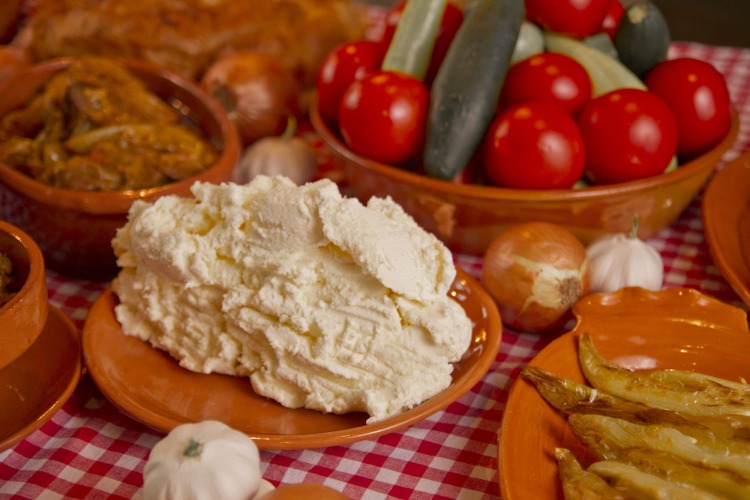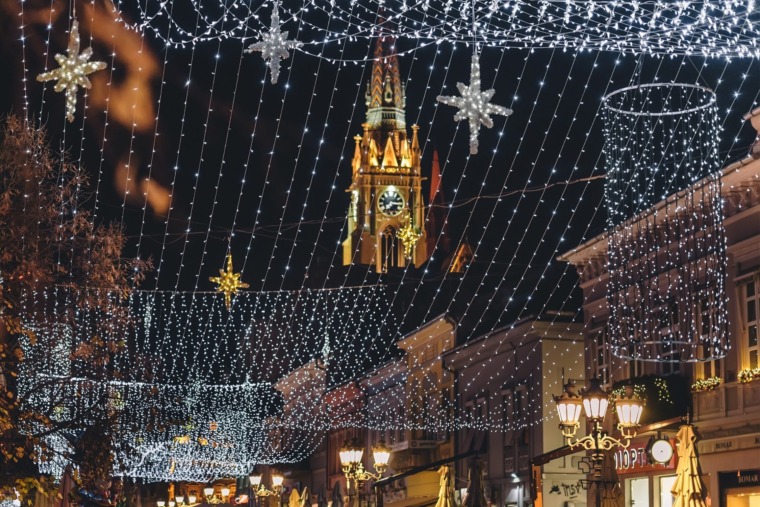

Irreplaceable ingredient of numerous specialties, always delicious, kajmak will lure you to another bite.
Kajmak is a thick creamy dairy product with an unforgettable smell and taste. It is made of fresh cow milk and it will possess all your senses at the very first bite.
Whether younger and sweeter or a bit older and saltier, kajmak will occupy tables in Serbia with first chilly days, as when the days become shorter and vapor starts coming out from your mouth one should eat “stronger” food like our elder advised. But it doesn’t mean that we can’t enjoy this delight all year around, from “mrsne” saint-patron days to everyday meals.
In Serbian cuisine kajmak is used as a first-course, as a simple side dish with traditional specialties, with ćevapi, barbeque, polenta, proja (corn bread), as well as the obligatory ingredient of all specialties – Karadjordjeva šnicla or komplet lepinja.
It is served for breakfast and dinner as a relish since it goes well with everything, but don’t let yourself be surprised when in every kafana which holds up to its name you get ćevapi or any other kind of meat served “on kajmak”. On the other hand, it can be something like a local fast food, so you can try different kinds of lepinja (flat bread) with kajmak, with or without prosciutto and garnish.
Most people in Serbia will tell you that the best way to try kajmak is in a warm lepinja, just enough to melt kajmak and make lepinja softer and juicier – the way it has been eaten in our country for decades.
You can try kajmak across the country in restaurants of traditional cuisine and good old kafana. Nevertheless, it tastes much better if we happen to get a chance to try it somewhere in those mountainous regions of Serbia, on a traditional farm or in an ethno village, where pastures always smell fresh.
Kajmak from Western Serbia and from around Čačak is considered to be the best. Hence on market days people across the country head in search of it at the local vendors who are known for having just the right one.
For centuries kajmak has been made in households following the same recipes. There is a belief that kajmak, just like all other Serbian specialties, can’t be factory-produced, at the same time keeping its unique taste and color. However, there’s something in those fragrant pastures, mild climate and dedication of Serbian villagers when it comes to preparation of this unique delicacy.
The procedure of making kajmak is not that complicated actually, but the very best producers say that the secret lies in good milk and the fact that they know exactly how long kajmak should be left to mature, whether it’s a matter of hours or days.
The old name for kajmak is “skorup” that represents a thin layer created when boiled fresh milk starts cooling. Layer by layer, skorup is collected and put in a special kind of buckets to mature and ferment.
In Serbia kajmak is much appreciated, but it is used from the Balkans, across Turkey, the entire Middle East, Iran and Afghanistan, all the way to India – actually everywhere there is a tradition of livestock farming and pastoral lifestyle in the mountainous areas.
It is well known that “tastes are not to be disputed”, and the same way you will love kajmak at the first bite or it will never agree with you. The only way to find out is to try it.
Foto: Restaurant “Zlatan bor”, Zlatibor, Serbia
Related Articles


10 Dishes That Must Be on a Serbian New Year’s Table
December 24, 2025
Tourist Holiday Guide to Serbia: Tips, Traditions & What to Expect
December 20, 2025
Snow-Free Serbia Travel Ideas for 2026
December 17, 2025





